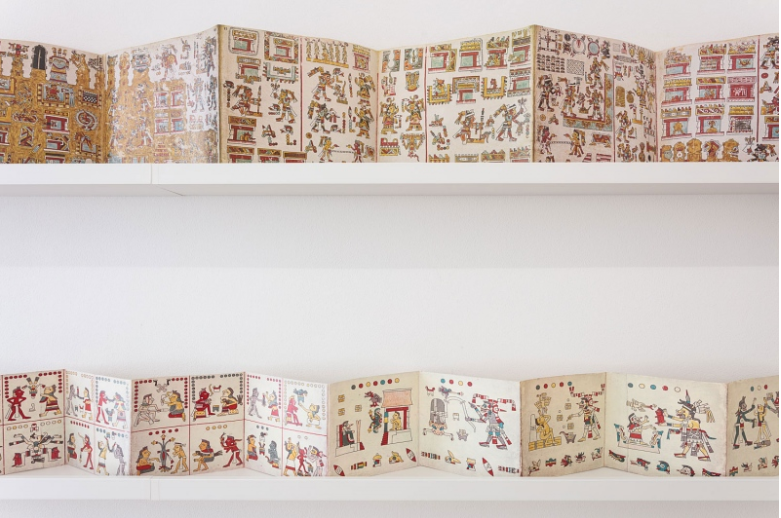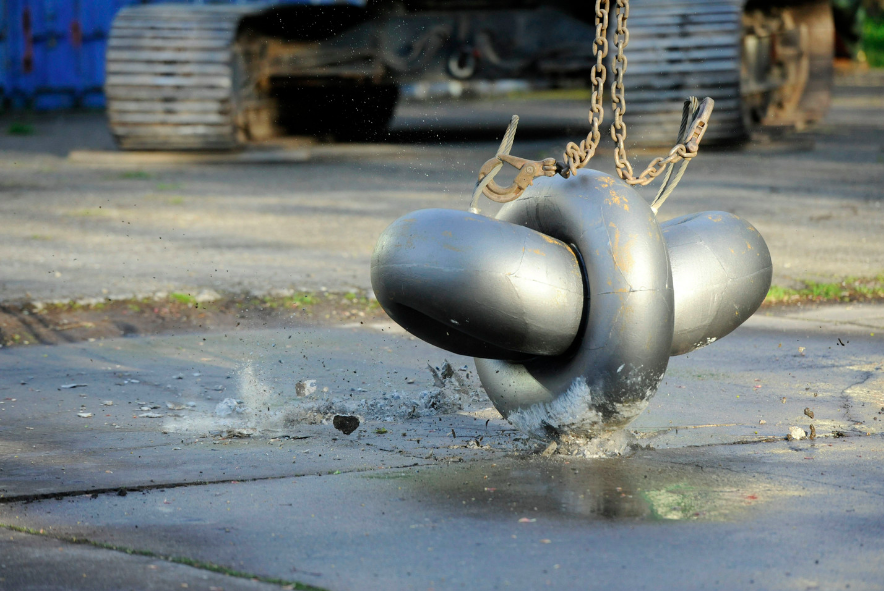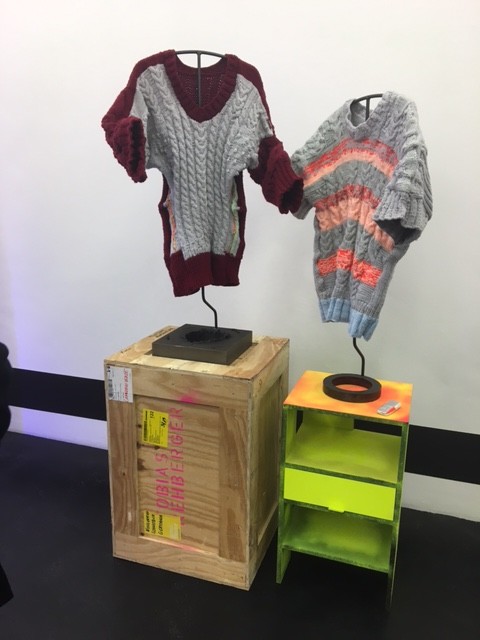Galleries
The Best and Worst of Berlin Gallery Weekend 2016 So Far
The official program kicks off tonight.

The official program kicks off tonight.

Hili Perlson

Branded though it may be, the descriptor “Berlin Gallery Weekend” feels especially misleading this year, with some galleries hosting satellite events as early as the Monday preceding the long weekend of coordinated openings across the city.
For this writer, the week started unofficially on Tuesday (art worlders, I plead you, let Monday be!) with the opening of Stephen G. Rhodes’s smart yet disturbing, exhibition, “Sweethaven Assumptions,” at Isabella Bortolozzi’s project space Eden Eden.
The Texas-born artist built an immersive funhouse of horrors that directs the viewer’s movement through the space, weaving together the stories of two irrational places: the Bayou Corne Sinkhole, created through fracking in a swampland of Louisiana, and Malta’s Sweethaven Village, built in 1979 as a film set for Robert Altman’s Popeye, which was later turned by the islanders to an amusement park. The show is a further development of Rhodes’s exhibition at the Kölnischer Kunstverein from late 2015, with new additions to the work relating to the migrant crisis in Europe, and the ugly rise of xenophobic and right-wing sentiments in Germany.
A tight crowd of gallery regulars continued from Rhodes’s opening to a nearby karaoke bar, which was my cue to leave, but I’d make an educated guess about the Best-of-Prince playlist that set the mood that night.

Installation view of The Huitzilopochtli Facsimile Reading Room at Udolpho. Courtesy of Udolpho.
Next door at Udolpho, an exhibition space for rare books and manuscripts founded by former Galerie Buchholz employee Margarita zu Hohenlohe, an unexpected highlight came in the form of facsimiles of the five best preserved pre-Conquest Mesoamerican books, which count among the rarest books in the world. The Mixtec and Aztec graphic writings describe a civilization that no longer exists, in symbols which have yet to be fully deciphered.
Wednesday kicked off with a preview of the newly minted Feuerle Collection, a private museum set in a WWII-era telecommunications bunker, dedicated to the collection of Désiré Feuerle.
The Asian-art expert presented a selection of pieces from his holdings of antiques from Southeast Asia, Imperial Chinese furniture, and contemporary artists such as Anish Kapoor, Nobuyoshi Araki, James Lee Byars, and Cristina Iglesias. The private museum’s meditative mood is set by a darkened room with a sound work by John Cage which visitors have to walk through, sans cell phones, in order to access the solemn lower level. There, a presentation of ancient furniture paired with contemporary work, all handpicked and staged by Feuerle himself, enchants with its elegance.
In late May, the bunker will become one of the official venues of the ninth Berlin Biennale, with the collection’s upper level taken over entirely by biennale artists, while the lower level remains untouched, creating an intriguing combination.

Michael Sailstorfer Silver Cloud performance in cooperation with COS in Berlin. Courtesy of BrauerPhotos © Neugebauer for COS x Michael Sailstorfer.
In the former East Berlin district of Weißensee, where countless artists have their studios, Michael Sailstorfer hosted a literally ground breaking performance which involved a crane dropping an iron ribbon unto the concrete-paved ground, repeatedly, until it smashed open. The grandiose happening was sponsored by Scandinavian high-street outfitter COS, the “mature” branch of fast-fashion giant H&M, which meant that a slew of past and present contestants from Heidi Klum’s “Germany’s Next Top Model” tiptoed around the premises in COS offerings.
At this point in the evening, one could choose between an opening at Galerie Neu’s secondary space MD 72, which hosted a vernissage for Romanian painter Victor Man, while over at Schinkel Pavillon, a performance for the opening of partners Adam Linder and Shahryar Nashat’s collaborative exhibition took place. There was also an intimate preview at the Halle am Berghain for the installation White Circle by artist Carsten Nicolai’s electronic music label Raster Noton. I opted for techno.

A work by Rirkrit Tiravanija and Tobias Rehberger at neugerriemschneider. Courtesy of Hili Perlson.
Thursday began with a viewing of Tobias Rehberger’s exhibition at neugerriemschneider. The artist invited a slew of gallery artists, artist friends, and students—60 in total—to send him a work they thought he would best appreciate. In return, Rehberger prepared a personal present for each participant, wrapped inside incredible paper packages that are sculptures in their own right. (There are two editions of each present, one for each artist to take home at the end of the show, and one for buyers).
One could spend hours exploring the personal connections between Rehberger and each of the artists invited, such as Isa Genzken, Philippe Parreno, Thomas Bayrle, Michael Riedel, Haegue Yang, and many more. Danh Vo for example, who studied under Rehberger at the Städelschule, sent his diploma, signed by his teacher.

Installation view of Alexandre Singh’s exhibition at Sprüth Magers Berlin. Courtesy Sprüth Magers.
Meanwhile at Galerie Sprüth Magers, only two out of the three shows slated for the weekend were ready for viewing. The gallery recently started managing the estate of Craig Kauffman, and is showing works on paper from the early 1960s as well as early experiments with plastic, which give delightful insights into the artist’s architectural yet deeply sensual abstractions of the female form, and women’s lingerie.
Alexandre Singh presented a new iteration of The School for Objects Criticized AE, which was previously shown at the new museum. Objects in the show stand in for protagonists in a witty, elliptical nearly hour-long play that takes its cue from the self-aware theater of Molière. Much like the French playwright’s work The School for Wives Criticized—a play that discusses his earlier comedy The School for Wives—Singh’s characters hold a (hopelessly tautological) discussion on the possibility of staging a subsequent play that critiques their own installation.
For this viewer, Singh’s humorous comment on self-referentiality in art and criticism was the perfect follow-up for the particularly art world insider-y exhibition by Tobias Rehberger.

Installation view of Tomas Saraceno’s show at Esther Schipper. Photo: Hili Perlson
Over at Esther Schipper, Argentinian-born Tomás Saraceno presents a sound piece carried out by a menacing looking spider, titled Arachno Concert: With Arachne (Nephila senegalensis), Cosmic Dust (Porus Chondrite) and the Breathing Ensemble. In a dim room, the spider’s movements on a cobweb send vibrations through highly sensitive microphones to a set of speakers, which in turn make the specks of dust in the air dance about, while a beam projects the dance of particles on an opposite screen.
Watch out for Part II of our Berlin Gallery Weekend coverage after the weekend’s openings.